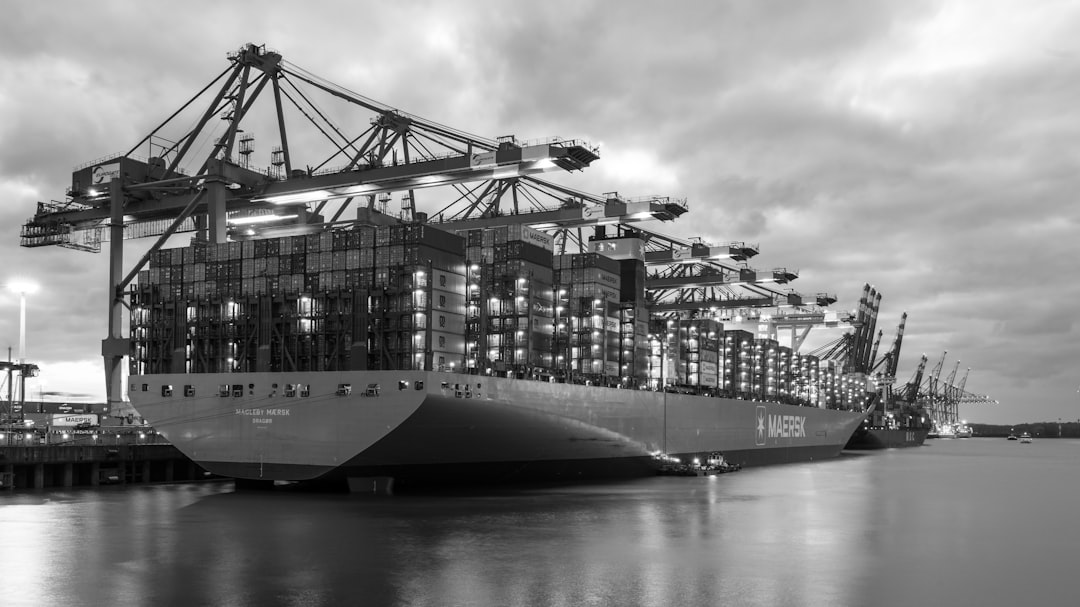In today’s globally interconnected marketplace, efficient logistics are no longer a luxury – they’re a necessity. Successfully navigating the complexities of moving goods requires a sophisticated understanding of both maritime and land logistics, and how they seamlessly integrate. This post delves into key strategies for optimizing your supply chain, ensuring timely and cost-effective delivery of your products.
1. Optimizing Maritime Shipping Routes and Carrier Selection
The maritime leg of your logistics journey forms the backbone of global trade. Choosing the right shipping routes and carriers is paramount. Factors to consider include:
- Transit Time: Balance speed with cost. Faster routes often come at a premium. Analyze your product’s sensitivity to delays and prioritize accordingly.
- Carrier Reliability: Research carriers’ on-time performance, track record of damage claims, and overall reputation. Consider using a reputable freight forwarder to help navigate carrier options.
- Port Congestion: Monitor port activity levels to avoid delays caused by congestion. Consider alternative ports if necessary, factoring in inland transportation costs.
- Container Type and Size Optimization: Select the appropriate container type (e.g., dry van, reefer, open top) and size to minimize wasted space and maximize efficiency. Careful planning can significantly reduce freight costs.
- Incoterms: Understand and correctly apply Incoterms (International Commercial Terms) to clarify responsibilities and costs between buyer and seller regarding shipping.
2. Integrating Land Transportation for Seamless Delivery
Once goods arrive at a port, efficient land transportation is crucial for final delivery. This stage often involves a complex interplay of modes, including trucking, rail, and potentially even air freight for time-sensitive deliveries. Key considerations include:
- Multimodal Transportation: Leveraging a combination of transport modes (e.g., sea freight to port, then trucking to final destination) can often provide the most cost-effective and efficient solution.
- Last-Mile Delivery Strategies: The final leg of delivery is often the most challenging and expensive. Optimizing last-mile delivery requires careful consideration of factors like delivery density, traffic patterns, and delivery windows.
- Warehouse Management and Inventory Control: Efficient warehousing is essential for managing inventory, optimizing storage space, and facilitating timely order fulfillment. Implementing a robust Warehouse Management System (WMS) can significantly improve efficiency.
- Route Optimization Software: Utilizing route optimization software can help minimize transportation costs and transit times by dynamically adjusting routes based on real-time traffic and other factors.
- Partnering with Reliable Land Carriers: Choosing reliable and experienced trucking companies or rail operators is critical for timely and damage-free delivery.
3. Implementing Technology for Enhanced Visibility and Control
Technology plays a vital role in modern logistics. Leveraging technology provides greater visibility, control, and efficiency across the entire supply chain. Key technological advancements include:
- GPS Tracking: Real-time tracking of shipments allows for proactive monitoring and immediate responses to potential delays or disruptions.
- Transportation Management Systems (TMS): TMS software streamlines various logistics functions, including route planning, shipment tracking, and carrier management.
- Blockchain Technology: Blockchain offers enhanced security and transparency by creating an immutable record of all transactions and movements within the supply chain.
- Internet of Things (IoT): IoT sensors can monitor environmental conditions within containers (temperature, humidity) and provide real-time data on the condition of goods.
- Data Analytics: Analyzing data from various sources can identify bottlenecks, optimize routes, and improve overall efficiency.
4. Risk Management and Contingency Planning
The global supply chain is susceptible to various risks, including natural disasters, geopolitical instability, and unforeseen delays. Effective risk management is crucial for mitigating potential disruptions:
- Supply Chain Diversification: Reducing reliance on single suppliers or transportation routes minimizes the impact of potential disruptions.
- Insurance and Indemnification: Adequate insurance coverage protects against potential losses due to damage, theft, or delays.
- Contingency Planning: Developing contingency plans for various scenarios (e.g., port closures, natural disasters) ensures business continuity.
- Real-time Monitoring and Alert Systems: Implementing systems that provide real-time alerts of potential disruptions enables proactive responses.
- Strong Supplier Relationships: Building strong relationships with key suppliers ensures collaborative problem-solving and efficient communication during disruptions.
5. Sustainability and Environmental Considerations
Environmental responsibility is increasingly important in logistics. Implementing sustainable practices reduces the environmental impact of your operations:
- Fuel-Efficient Transportation: Optimizing routes, using fuel-efficient vehicles, and employing alternative fuels (e.g., LNG, biofuels) reduces carbon emissions.
- Reduced Packaging: Minimizing packaging materials reduces waste and transportation costs.
- Sustainable Packaging Materials: Using recycled or biodegradable packaging materials promotes environmental sustainability.
- Carbon Offset Programs: Investing in carbon offset programs can compensate for unavoidable emissions.
- Green Certifications: Seeking green certifications (e.g., ISO 14001) demonstrates commitment to environmental sustainability.
By implementing these strategies, businesses can achieve significant improvements in efficiency, cost-effectiveness, and sustainability within their maritime and land logistics operations. The key is to adopt a holistic approach, integrating technology, risk management, and sustainable practices to create a truly optimized and resilient supply chain.
SEO Tags: Maritime Logistics, Land Logistics, Supply Chain Optimization, Logistics Strategies, Transportation Management




